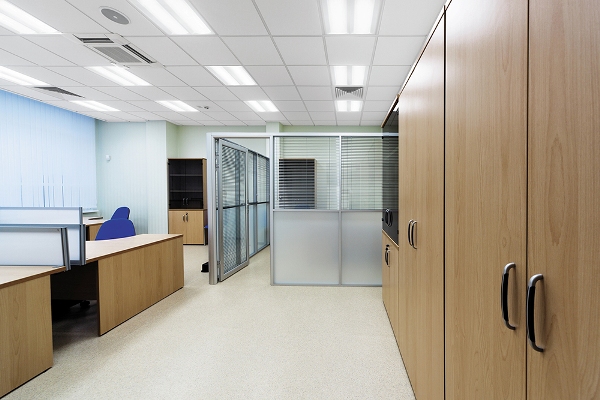Philips announced Philips SpaceWise LED System has been selected to participate in the U.S. General Services Administration (GSA) FY2013 Green Proving Ground (GPG) program that evaluates innovative sustainable building technologies.
Designed for large, open-plan office spaces, SpaceWise integrates intelligence and dimming controls tuned to specific application needs in the LED luminaire, resulting in advanced performance and deeper energy savings of up to 50 to 75 percent over traditional lighting technologies.
With presence detection and daylight harvesting, each fixture acts independently, yet is part of a mesh network that reacts to occupants – all without the need for re-wiring or additional building controls.
Green Proving Ground uses GSA’s own real estate portfolio as a test bed to evaluate technologies that reduce energy consumption in federal buildings and have significant savings potential.
The technologies are selected for their potential to help reduce operating costs, improve occupant well-being and to meet the sustainability goals in President Obama’s Executive Order 13514 on environmental, energy and economic performance.
The ongoing GSA study evaluates LED Lighting technologies with Integrated Controls, including LED retrofit technology that integrates lamp, driver, daylight controls, and occupancy sensors into a single unit.
The advantage of SpaceWise technology is that it is designed for one-for-one replacement of existing T-12 and T-8 fluorescent fixtures, so it can be installed using existing wiring. Automatic system calibration and the use of a handheld remote to group fixtures improve the efficiency of commissioning.
As a solution that integrates LED technology with controls, SpaceWise will be measured and validated at GSA properties in Chicago and Atlanta for energy efficiency, cost effectiveness, operations and maintenance, and deployment potential.
The GSA will work with the Department of Energy’s (DOE) Lawrence Berkeley National Laboratory (LBNL) to conduct the testing and evaluation study.
Lighting constitutes 30 to 35 percent of total energy load in commercial buildings. There are over 4.9 million non-residential buildings in the US and over 72 billion square feet of commercial space, of which 19 percent are offices.
Private offices have long been served by room-based occupancy sensors, but the cost and complexity for new controls design and wiring has been a primary barrier to adoption.
Open-plan offices are especially difficult to re-wire for controls due to pre-existing building zones and circuits. With two-thirds of today’s office space being open office, SpaceWise becomes a breakthrough technology to achieve deep energy efficiency where it previously was not possible.
“Because the intelligence has been embedded in the Philips DuaLED luminaire, SpaceWise technology makes installation easy, accelerating adoption by making it simple enough to be suitable for both retrofit or new design applications,” said Bruno Biasiotta, president and CEO of Philips Lighting Americas.
“The SpaceWise system is not tied to pre-existing controls systems and functions as a stand-alone solution that enhances the energy savings inherent to Philip LED luminaires by 20-30 percent,” Biasiotta added.

